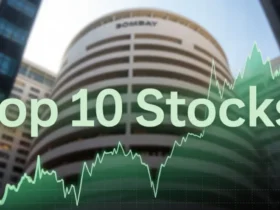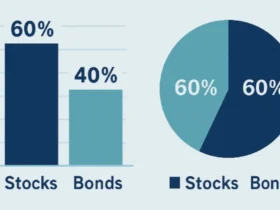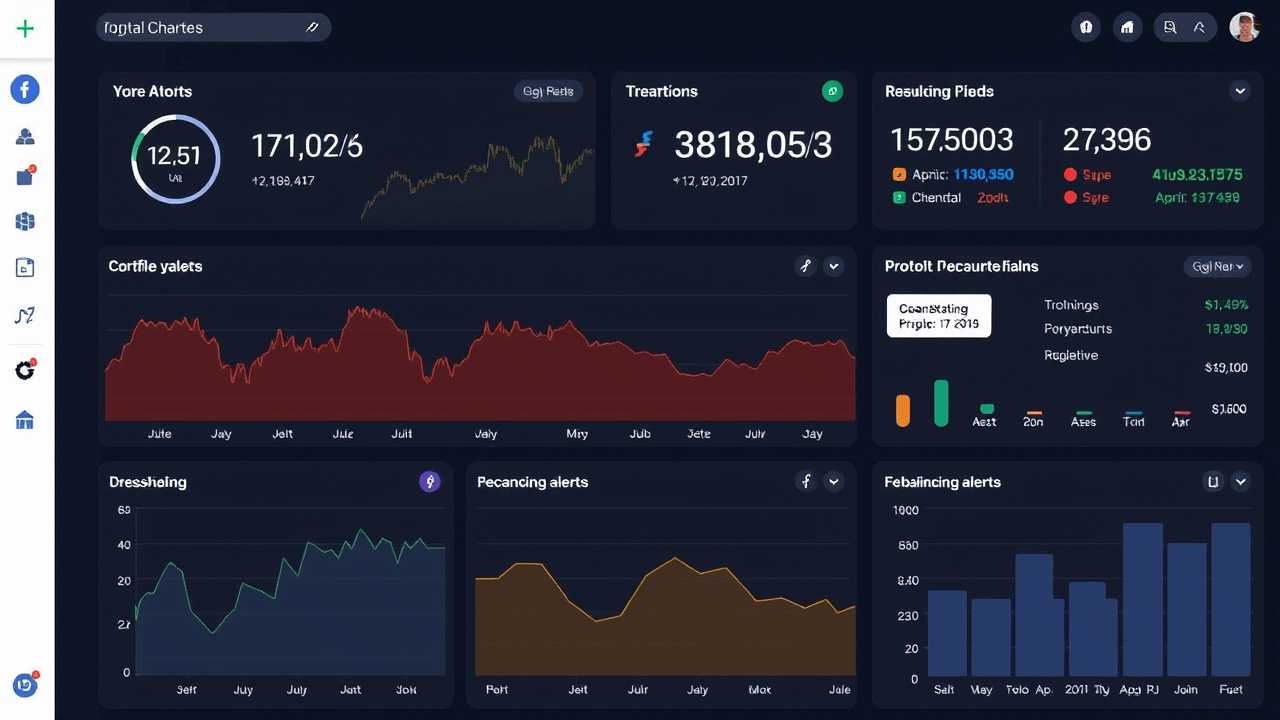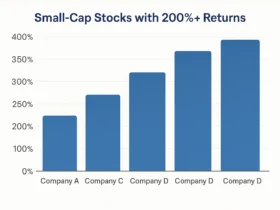What Is Portfolio Rebalancing?
Let’s start with the basics. Portfolio rebalancing is like giving your investments a tune-up. It’s the process of adjusting the mix of assets—like stocks, bonds, or cash—in your portfolio to keep it aligned with your financial goals and risk tolerance. Say you want 60% of your portfolio in stocks and 40% in bonds. Over time, as prices shift, that balance can drift. Rebalancing brings it back in line.
Traditionally, investors rebalance on a schedule—maybe once a quarter or year—or when an asset strays too far from its target weight. But here’s the catch: markets don’t wait for your calendar. During market volatility, when prices swing like a pendulum, a slow approach might leave you exposed. That’s where real-time rebalancing swoops in to save the day.
Understanding Market Volatility
So, what exactly is market volatility? Picture a rollercoaster: prices climb high, then plunge low, all in a short span. Market volatility measures how fast and far asset prices move. It’s tracked by tools like the VIX index, often called the “fear gauge,” which shows how much the stock market expects to fluctuate in the next 30 days.
What Sparks Volatility?
Markets don’t just flip out for no reason. Here are some common triggers:
- Economic Shocks: Think inflation spikes or surprise job reports.
- Global Events: Wars, elections, or pandemics can rattle investors.
- Policy Changes: Interest rate hikes or cuts by central banks.
- Earnings Surprises: When companies miss or beat expectations.
How Volatility Hits Your Portfolio
Let’s say your portfolio starts with 60% stocks and 40% bonds. A sudden stock market drop could shrink your stock portion to 50% or less, leaving bonds dominating. That might feel safe in the moment, but it could mean missing out when stocks rebound. On the flip side, a stock surge could push your allocation to 70%, ramping up your risk. Volatility throws your plan off track—unless you act fast.
Here’s a quick look at how volatility has spiked in the past:
| Event | VIX Peak | Market Impact |
|---|---|---|
| 2008 Financial Crisis | 80.86 | S&P 500 crashed 57% from peak to trough |
| COVID-19 Crash (2020) | 82.69 | S&P 500 plummeted 34% in a month |
| 2022 Inflation Surge | 36.45 | Markets faced ongoing uncertainty |
These numbers show why sitting still during volatility isn’t an option. You need a strategy that keeps up.

Traditional vs. Real-Time Portfolio Rebalancing
The Old-School Way
Traditional rebalancing has two main flavors:
- Calendar-Based: You tweak your portfolio on a set schedule—monthly, quarterly, whatever works. It’s predictable but slow.
- Threshold-Based: You act when an asset drifts too far (say, 5%) from its target. It’s more flexible but still reactive.
These methods shine in calm markets. But when volatility hits, waiting for your next check-in could cost you.
Enter Real-Time Rebalancing
Real-time portfolio rebalancing flips the script. Instead of sticking to a timetable, it adjusts your investments as markets move. Powered by technology—like algorithms and live data—it keeps your portfolio on target no matter how crazy things get.
“Rebalancing isn’t just about managing risk; it’s about seizing opportunities.” – John C. Bogle, Vanguard Founder
How They Stack Up
| Feature | Traditional Rebalancing | Real-Time Rebalancing |
|---|---|---|
| Timing | Fixed intervals or thresholds | Instant, based on market shifts |
| Speed | Slower, less responsive | Lightning-fast adjustments |
| Tech Needed | Manual or basic automation | Algorithms, AI, real-time data |
| Flexibility | Limited by schedule or rules | Adapts to any market condition |
| Cost | Fewer trades, lower fees | More trades, potentially higher fees |
Real-time rebalancing trades predictability for agility. But does it deliver? Let’s find out.
How Real-Time Rebalancing Works
So, how does this high-tech approach actually function? It’s not magic—it’s a blend of data, algorithms, and automation. Here’s the breakdown:
1. Live Market Data
Real-time rebalancing taps into constant streams of market info—stock prices, bond yields, you name it—via APIs or financial feeds.
2. Smart Algorithms
These aren’t your average calculators. Advanced algorithms analyze the data, spot deviations from your target allocation, and decide what to do next. Some even use machine learning to predict trends.
3. Instant Trades
Once the system flags a need to rebalance, it executes buy or sell orders automatically. No delays, no second-guessing.
4. Ongoing Watch
The process doesn’t stop. It monitors your portfolio 24/7, tweaking as needed to keep you on course.
What You’ll Find Inside
- Real-time data feeds for up-to-the-second insights
- AI-driven predictions to anticipate market moves
- Automated trading tools for seamless execution
- Risk controls to avoid overreacting
It’s like having a financial assistant that never sleeps.
Benefits of Real-Time Rebalancing
Why go real-time? Here’s why it’s worth considering, especially when markets turn stormy:
1. Cuts Losses Fast
When stocks tank, real-time rebalancing can shift your money to safer assets—like bonds or cash—before the damage piles up.
2. Sticks to Your Plan
It keeps your portfolio’s risk level steady, so you’re not overexposed or overly cautious when conditions change.
3. Grabs Opportunities
Falling prices? It buys low. Rising prices? It sells high. Real-time adjustments let you capitalize on market swings.
4. Eases Your Mind
No more glued-to-the-screen stress. Automation handles the heavy lifting, sparing you from rash decisions.
“In times of market turbulence, a well-rebalanced portfolio can be the difference between staying afloat and sinking.” – Warren Buffett, Berkshire Hathaway CEO
5. Matches Market Speed
Volatility doesn’t wait, and neither does real-time rebalancing. It’s built for today’s fast-paced markets.

Implementing Real-Time Rebalancing
Ready to try it? Here’s your roadmap to get started:
Step 1: Set Your Goals
Figure out your ideal asset mix. Are you:
- Aggressive: 80% stocks, 20% bonds?
- Balanced: 60% stocks, 40% bonds?
- Cautious: 30% stocks, 70% bonds?
Your risk tolerance and timeline will guide you.
Step 2: Pick a Platform
Many robo-advisors and tools now offer real-time or near-real-time rebalancing. Here’s a quick comparison:
| Platform | Rebalancing Style | Standout Features | Fees |
|---|---|---|---|
| Betterment | Daily | Tax-loss harvesting, goal tracking | 0.25% annually |
| Wealthfront | Continuous | Direct indexing, risk parity | 0.25% annually |
| M1 Finance | Real-time with trades | Custom “pies,” dynamic adjustments | Free (no mgmt fees) |
| Schwab Intelligent | Threshold-based | No fees, but requires cash allocation | Free |
Step 3: Define Rules
Set parameters—like how much drift triggers a trade—so the system aligns with your strategy.
Step 4: Keep an Eye Out
Even with automation, check in occasionally. Markets evolve, and so should your plan.
Case Study: Real-Time Rebalancing in Action
Let’s paint a picture. Meet Sarah, an investor with a $100,000 portfolio—60% stocks, 40% bonds. A market crash hits, and stocks fall 20% in a week. Bonds hold steady.
- No Rebalancing: Her portfolio shifts to 48% stocks, 52% bonds. When stocks recover by 25%, her total value hits $104,000.
- Real-Time Rebalancing: The system buys stocks as they drop, keeping her at 60/40. After the recovery, her portfolio climbs to $108,000.
That $4,000 difference? That’s real-time rebalancing flexing its muscle. (Note: This is a simplified scenario—real results vary.)
Potential Risks and Considerations
Before you jump in, let’s talk downsides:
1. Trading Costs
More trades can mean more fees or taxes. Watch out, especially in taxable accounts.
2. Chasing Noise
Adjusting too often might react to short-term blips instead of big trends.
3. Tech Hiccups
If the system glitches, trades could stall. Pick a platform with a solid reputation.
4. Not for Everyone
Small portfolios might not justify the costs. It’s best for those with enough capital to make it worthwhile.
How to Dodge the Pitfalls
- Use low-fee platforms.
- Set smart thresholds to limit trades.
- Review your setup regularly.
Conclusion
Market volatility is a fact of life, but it doesn’t have to derail your financial dreams. Real-time portfolio rebalancing offers a modern, proactive way to minimize losses, stay on track, and even profit when others panic. With the right tools and strategy, you can face the market’s ups and downs with confidence.
Curious? Talk to a financial advisor or test-drive a platform like Wealthfront or M1 Finance. Your portfolio—and your peace of mind—will thank you.
FAQs
1. What is real-time portfolio rebalancing?
It’s an automated strategy that adjusts your investments instantly based on market changes to maintain your target allocation.
2. How is it different from traditional rebalancing?
Traditional methods use set schedules or thresholds. Real-time rebalancing acts immediately, using live data and automation.
3. What are the perks?
It reduces losses, keeps your risk in check, and lets you seize market opportunities—all without the stress.
4. Any risks to watch for?
Yes—higher costs, over-trading, and tech reliance. Mitigate them with careful planning.
5. How do I start?
Define your asset mix, pick a platform with real-time features, set your rules, and monitor progress.
6. Is it right for me?
It’s ideal for active investors with larger portfolios. Smaller accounts might not see the same bang for the buck.






























Leave a Reply